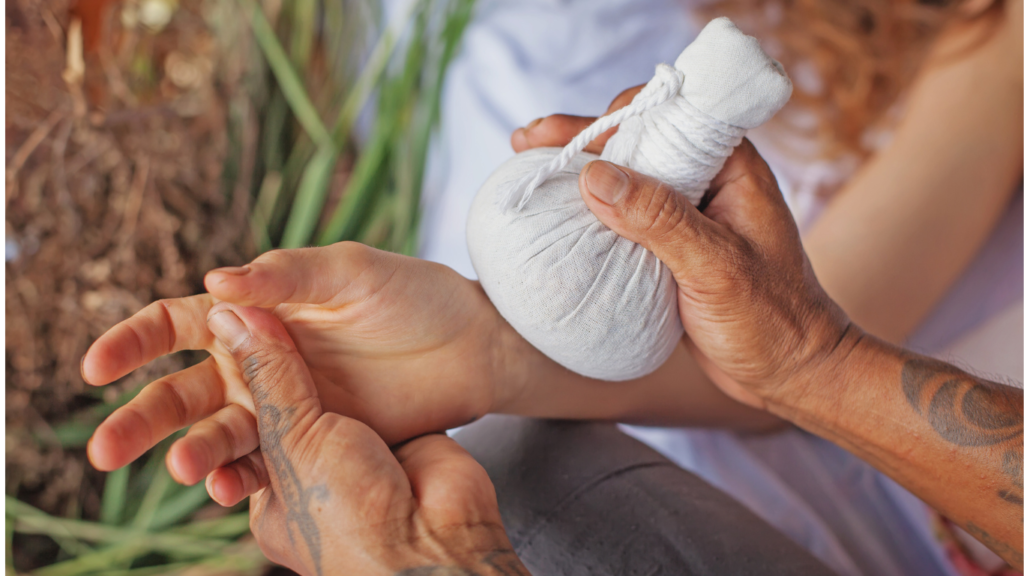Panchkarma Therapies

Panchkarma is a comprehensive Ayurvedic detoxification and rejuvenation therapy designed to balance the body’s doshas (Vata, Pitta, and Kapha) and eliminate toxins. It involves five primary therapeutic procedures, which are:
Vamana (Therapeutic Vomiting): This procedure involves induced vomiting to expel excess Kapha and toxins from the upper digestive tract, promoting respiratory and digestive health.
Virechana (Purgation): This involves the use of herbal laxatives to cleanse the intestines, eliminating excess Pitta and toxins from the body. It helps improve digestion and clear the liver.
Basti (Enema Therapy): This therapy uses herbal oils or decoctions administered rectally to balance Vata and cleanse the colon. It nourishes and rejuvenates the body while removing accumulated waste.
Nasya (Nasal Therapy): Nasal administration of herbal oils or powders helps clear sinus congestion, relieve headaches, and improve respiratory health while balancing the mind and senses.
Raktamokshana (Bloodletting): This less common procedure involves detoxifying the blood by drawing out impurities. It is particularly beneficial for skin disorders and conditions caused by excess blood heat.
Frequently Asked Questions (FAQ)- Panchkarma Therapy
1. What is Panchkarma?
Panchkarma is a holistic Ayurvedic detoxification and rejuvenation therapy that involves five main therapeutic procedures to eliminate toxins (ama) from the body and restore balance to the doshas (Vata, Pitta, Kapha).
2. What are the five procedures of Panchkarma?
The term “Panchkarma” means “five actions.” These include:
Vamana – Therapeutic emesis (induced vomiting)
Virechana – Purgation (cleansing of intestines)
Basti – Medicated enemas
Nasya – Nasal administration of medication
Raktamokshana – Bloodletting (used selectively and traditionally)
3. What are the benefits of Panchkarma?
Detoxifies the body and mind
Boosts immunity and metabolism
Improves digestion and sleep
Reduces stress and enhances mental clarity
Rejuvenates tissues and slows aging
Helpful in managing chronic diseases
4. Who should undergo Panchkarma?
Panchkarma is recommended for individuals:
With chronic lifestyle-related disorders
Experiencing stress, fatigue, or burnout
With digestive issues, skin disorders, or hormonal imbalances
Seeking seasonal detox or rejuvenation
5. Is Panchkarma safe?
Yes, when performed under the supervision of a qualified Ayurvedic doctor, Panchkarma is safe and highly effective. A proper pre-assessment is necessary to tailor the therapy.
6. How long does Panchkarma take?
Depending on the individual’s condition and the depth of detox needed, Panchkarma can range from 7 to 21 days, including the preparatory and recovery phases.
7. What is the preparatory phase of Panchkarma?
Before the main therapies, Purva Karma is done, which includes:
Snehana – Internal and external oleation (oil therapy)
Swedana – Sudation (herbal steam therapy)
8. Are there any side effects?
Mild fatigue, body ache, or emotional release may be experienced initially as the body adjusts to detox. These are temporary and part of the healing process.
9. Can Panchkarma help with specific diseases?
Yes, it is beneficial in managing conditions like:
Arthritis, asthma, and digestive disorders
Skin diseases (like psoriasis, eczema)
Anxiety, insomnia, and depression
Obesity, PCOS, and hormonal imbalances
10. What is the diet during Panchkarma?
A light, easily digestible diet (like khichdi, herbal teas, warm water) is recommended. Diet is customized as per the patient’s dosha and therapy stage.
11. Can anyone undergo Panchkarma?
Not everyone is immediately eligible. It is contraindicated in:
Very weak or malnourished individuals
Pregnant women
Children below a certain age
During acute illness or infections
12. How often should Panchkarma be done?
Ideally, once or twice a year (usually during season changes) is recommended for healthy individuals. For chronic conditions, a tailored schedule is made.
